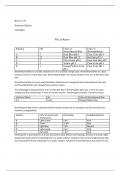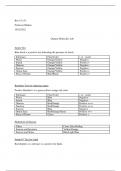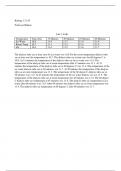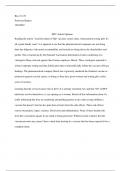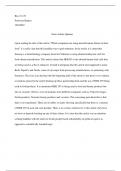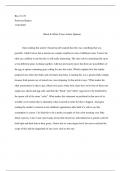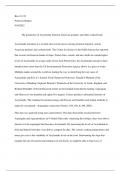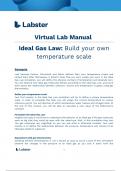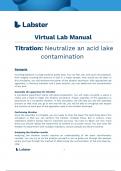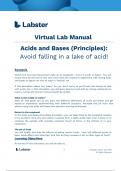Middlesex Community College
Latest uploads at Middlesex Community College. Looking for notes at Middlesex Community College? We have lots of notes, study guides and study notes available for your school.
-
39
- 0
-
1
All courses for Middlesex Community College
Latest notes & summaries Middlesex Community College
A study of the cell, the fundamental unit of biological structure and function. An introductory section on bioenergetics and biochemistry lay the groundwork for the consideration of the cell through a modern interdisciplinary approach. The course examines the ultrastructure of the cell and of the most universal cell functions: transport, cellular respiration, photosynthesis, cellular reproduction, and protein synthesis.
A study of the cell, the fundamental unit of biological structure and function. An introductory section on bioenergetics and biochemistry lay the groundwork for the consideration of the cell through a modern interdisciplinary approach. The course examines the ultrastructure of the cell and of the most universal cell functions: transport, cellular respiration, photosynthesis, cellular reproduction, and protein synthesis.
A study of the cell, the fundamental unit of biological structure and function. An introductory section on bioenergetics and biochemistry lay the groundwork for the consideration of the cell through a modern interdisciplinary approach. The course examines the ultrastructure of the cell and of the most universal cell functions: transport, cellular respiration, photosynthesis, cellular reproduction, and protein synthesis.
A study of the cell, the fundamental unit of biological structure and function. An introductory section on bioenergetics and biochemistry lay the groundwork for the consideration of the cell through a modern interdisciplinary approach. The course examines the ultrastructure of the cell and of the most universal cell functions: transport, cellular respiration, photosynthesis, cellular reproduction, and protein synthesis.
A study of the cell, the fundamental unit of biological structure and function. An introductory section on bioenergetics and biochemistry lay the groundwork for the consideration of the cell through a modern interdisciplinary approach. The course examines the ultrastructure of the cell and of the most universal cell functions: transport, cellular respiration, photosynthesis, cellular reproduction, and protein synthesis.
A study of the cell, the fundamental unit of biological structure and function. An introductory section on bioenergetics and biochemistry lay the groundwork for the consideration of the cell through a modern interdisciplinary approach. The course examines the ultrastructure of the cell and of the most universal cell functions: transport, cellular respiration, photosynthesis, cellular reproduction, and protein synthesis.
A study of the cell, the fundamental unit of biological structure and function. An introductory section on bioenergetics and biochemistry lay the groundwork for the consideration of the cell through a modern interdisciplinary approach. The course examines the ultrastructure of the cell and of the most universal cell functions: transport, cellular respiration, photosynthesis, cellular reproduction, and protein synthesis.
The fundamental concepts of inorganic chemistry including the physical and chemical properties of matter, atomic structure, chemical bonding, stoichiometry, the gas laws, solutions, acids and bases, redox reactions, and chemical equilibria. The laboratory includes an experimental study of the chemical principles
The fundamental concepts of inorganic chemistry including the physical and chemical properties of matter, atomic structure, chemical bonding, stoichiometry, the gas laws, solutions, acids and bases, redox reactions, and chemical equilibria. The laboratory includes an experimental study of the chemical principles
The fundamental concepts of inorganic chemistry including the physical and chemical properties of matter, atomic structure, chemical bonding, stoichiometry, the gas laws, solutions, acids and bases, redox reactions, and chemical equilibria. The laboratory includes an experimental study of the chemical principles

